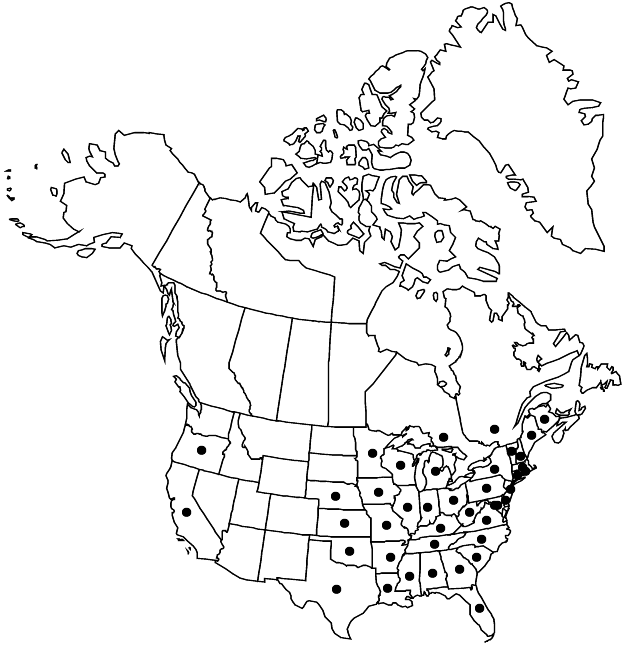Persicaria orientalis
Hist. Nat. Vég. 10: 537. 1841.
Plants annual, 6–25 dm; roots not also arising from proximal nodes; rhizomes and stolons absent. Stems erect, simple or branched distally, usually ribbed, strigose or glabrescent proximally, pilose to hirsute distally. Leaves: ocrea brownish proximally, green distally, narrowly funnelform, 10–20 mm, chartaceous proximally, foliaceous distally, rarely chartaceous throughout, base inflated or not, margins truncate, ciliate with bristles 1–3 mm, surface densely strigose to hispid, not glandular-punctate; petiole 1–8.5(–14) cm, densely pilose to hirsute; blade without dark triangular or lunate blotch adaxially, ovate, 6–25(–30) × 3–17 cm, base cordate to truncate, margins scabrous to ciliate, apex acuminate, faces minutely strigose to densely hirsute, especially along veins abaxially, not glandular-punctate. Inflorescences mostly terminal, nodding or erect, uninterrupted, 10–150 × 8–18 mm; peduncle 20–100 mm, hirsute; ocreolae overlapping, margins ciliate with bristles 0.2–1 mm. Pedicels ascending to spreading, 1–4 mm. Flowers (1–)2–5 per ocreate fascicle, homostylous; perianth roseate to red, glabrous, not glandular-punctate, slightly accrescent; tepals 5, connate in proximal 1/3, obovate, 3–4.5 mm, veins prominent or not, not anchor-shaped, margins entire, apex obtuse to rounded; stamens 6–8, included or exserted; anthers pink or red, elliptic; styles 2, connate proximally. Achenes included, dark brown to black, discoid, 2.5–3.5 × 3–3.5 mm, shiny to dull, smooth to minutely granulate.
Phenology: Flowering Jun–Oct.
Habitat: Moist waste places
Elevation: 0-500 m
Distribution

Introduced; N.B., Ont., Que., Ala., Ark., Calif., Conn., Del., D.C., Fla., Ga., Ill., Ind., Iowa, Kans., Ky., La., Maine, Md., Mass., Mich., Minn., Miss., Mo., Nebr., N.H., N.J., N.Y., N.C., Ohio, Okla., Oreg., Pa., R.I., S.C., Tenn., Tex., Vt., Va., W.Va., Wis., s Asia (India).
Discussion
Persicaria orientalis was introduced as a garden ornamental. It often persists around homesteads and barnyards, and occasionally escapes and becomes weedy in moist waste places. A collection made in 1853 by F. V. Hayden at Fort Pierre, South Dakota (MO), is assumed to have come from a cultivated plant.
Selected References
None.